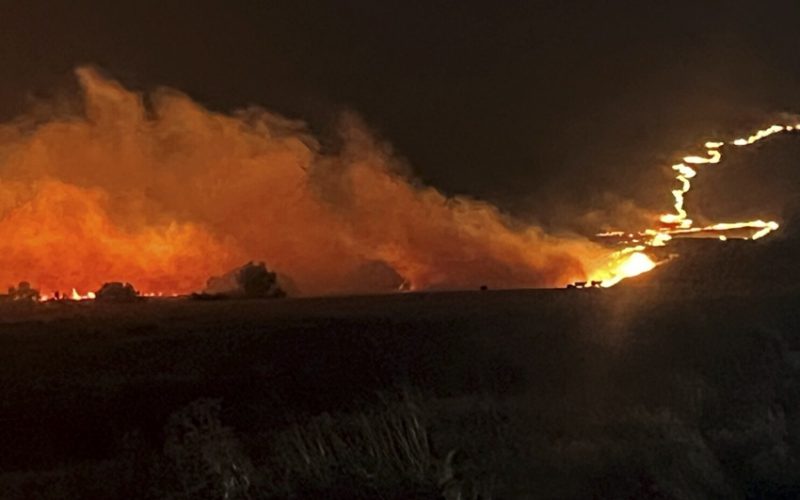Salem, OR – Oregon lawmakers are set to convene for a special session Thursday to approve emergency funding aimed at addressing the mounting costs from the state’s devastating 2024 wildfire season, which has already set a new record for destruction and financial toll.
The wildfires, which have scorched a record 1.9 million acres (nearly 3,000 square miles) of land—primarily in eastern Oregon—have cost the state over $350 million in firefighting efforts, making it the most expensive wildfire season in Oregon’s history. Governor Tina Kotek, who declared a state of emergency in July, is asking legislators to approve $218 million in emergency funding to support the Oregon Department of Forestry and the Oregon Department of the State Fire Marshal. The funds are crucial to continue operations and pay contractors who assisted in battling the blazes.
Though the federal government is expected to cover more than half of the total costs, Oregon must first address the immediate financial needs as it awaits reimbursement.
“We have faced an unprecedented wildfire season in 2024, and this emergency funding is necessary to meet the immediate fiscal obligations as we await federal assistance,” said Kotek in a statement released in late November. “It’s important that we continue to work together to protect lives, lands, and property, and fulfill our responsibilities to the taxpayers.”
The wildfires this year have had far-reaching consequences for the state. At least 42 homes have been destroyed, and large areas of agricultural and grazing land, especially in the rural east, have been damaged or lost. The Durkee Fire, which burned an area roughly the size of Rhode Island (460 square miles), was the largest wildfire in the nation for a period this summer.
Kotek’s request for emergency funding is just the beginning of what will be an ongoing conversation about wildfire preparedness and response in Oregon. As lawmakers prepare for the next legislative session in January, Kotek has proposed a more long-term strategy to address the state’s wildfire risks. She is seeking an additional $130 million in the two-year state budget for wildfire readiness and mitigation efforts.
The Governor has also requested a one-time redirection of $150 million from the state’s rainy day fund to bolster fire suppression resources. While this funding would help meet the immediate demands of the wildfire season, the Governor and legislators are also grappling with how to fund wildfire prevention and management on a more sustainable basis as climate change exacerbates drought conditions and increases the frequency of wildfires in the U.S. West.
Oregon’s 2024 wildfire season follows the catastrophic 2020 fires, which remain some of the most destructive in the state’s history. The 2020 fires, which claimed nine lives and destroyed over 5,000 homes, left a lasting impact on communities and the state’s emergency response infrastructure.
Despite the 2024 season’s record-breaking costs, the threat of future fires remains high. In addition to the funding requests, Kotek has called for increased investments in fire preparedness and the building of stronger systems to protect communities and resources. The upcoming legislative session will be pivotal in determining how Oregon addresses these growing challenges in the years to come.
For now, however, lawmakers will focus on securing the emergency funds necessary to ensure that state agencies and contractors can continue their work during the ongoing recovery from this year’s fires.











